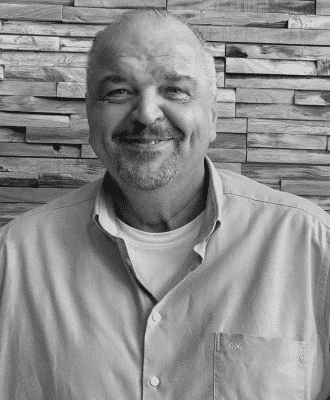Auswahl unserer Designer
- Andreas Engesvik
- Alexander Girard
- Antenna Desing
- Alexander Lorenz
- Brian Kane
- Bill Stumpf
- Bruce Burdick
- Bromme Jenkins
- Charles Pollock
- Cini Boeri
- Carol Catalano
- Charles and Ray Eames
- Daniel Korb
- Don Chadwick
- Dan Grabowski
- Eero Saarinen
- EOOS
- Edward Barber & Jay Osgerby
- forpeople
- Franco Albini
- Florence Knoll
- Formway Design
- Frank Gehry
- George Nelson
- Harry Bertoia
- Isamu Noguchi
- Jens Risom
- Jeff Weber
- Jonathan Crinion
- Ludwig Mies van der Rohe
- Marc Krusin
- Mark Newson
- Mark Goetz
- Marcel Breuer
- Markus Jehs and Jürgen Laub
- Naoto Fukasawa
- Observatory
- Piero Lissoni
- Ray Wilkes
- Sam Hecht and Kim Colin
- Studio 7.5
- Tim Wallace
- Warren Platner
- Ward Bennett
- Yves Béhar
Designers
Charles and Ray Eames
Products by Charles and Ray Eames
A chair that looked like a crisp. Another that resembled a “well-used first baseman’s mitt”. A folding screen that rippled...
With a grand sense of adventure, Charles and Ray Eames turned their curiosity and boundless enthusiasm into creations that established them as a truly great husband-and-wife design team. Their unique synergy led to a whole new look in furniture. Lean and modern. Playful and functional. Sleek, sophisticated and beautifully simple. That was and is the “Eames look”.
That look and their relationship with Herman Miller started with moulded plywood chairs in the late 1940s and includes the world-renowned Eames lounge chair, now in the permanent collection of the Museum of Modern Art in New York.
Charles and Ray achieved their monumental success by approaching each project the same way: Does it interest and intrigue us? Can we make it better? Will we have “serious fun” doing it?
“The role of the designer is that of a very good, thoughtful host anticipating the needs of his guests.”
– Charles Eames
They loved their work, which was a combination of art and science, design and architecture, process and product, style and function. “The details are not details,” said Charles. “They make the product.”
A problem-solver who encouraged experimentation among his staff, Charles once said his dream was “to have people working on useless projects. These have the germ of new concepts.”
“I think the most difficult thing is to keep the big idea – to be able to look critically at the work.”
– Ray Eames
Their own concepts evolved over time, not overnight. As Charles noted about the development of the Moulded Plywood Chairs, “Yes, it was a flash of inspiration,” he said, “a kind of 30-year flash.”
With these two, one thing always seemed to lead to another. Their revolutionary work in moulded plywood led to their breakthrough work in moulded fibreglass seating. A magazine contest led to their highly innovative “Case Study” house. Their love of photography led to film-making, including a huge seven-screen presentation at the Moscow World’s Fair in 1959, in a dome designed by their friend and colleague, Buckminster Fuller.
Graphic design led to showroom design, toy collecting to toy inventing. And a wooden plank contraption for taking naps, rigged up by their friend, director Billy Wilder, led to their acclaimed chaise lounge design.
A design critic once said that this extraordinary couple “just wanted to make the world a better place”. That they did. They also made it a lot more interesting.
Office/Studio
The Eames Office
Awards/Recognition
Organic Furniture Competition, Museum of Modern Art, 1940
Emmy Award, (Graphics), The Fabulous Fifties,, 1960
Kaufmann International Design Award, 1961
25 Year American Institute of Architects Award, 1977
Eliot Norton Chair of Poetry, Harvard, 1971
Queen’s Gold Medal for Architecture, 1979
Named “Most Influential Designer of the 20th Century”, WORLDESIGN ‘85, Industrial Designers Society of America, 1985
The Work of Charles and Ray Eames: A Legacy of Invention, Travelling Exhibition, Library of Congress, 1999
Distribution Rights
Herman Miller and Vitra are two independent companies with a common interest in the designs and legacies of Charles and Ray Eames, George Nelson and Alexander Girard.
In 1956, Vitra became Herman Miller’s licensee for continental Europe. After the initial success of the endeavour, a joint venture was formed under the name Herman Miller AG to further the business. The cooperation was accompanied by a warm personal relationship between the De Pree family of Herman Miller and the Fehlbaum family of Vitra. For over two decades the companies successfully collaborated to establish a market for good design, and further the designs of Eames, Nelson and Girard in Europe. When the partnership was dissolved in 1984, the rights to the designs of Eames, Nelson and Girard were assigned to Vitra for Europe and the Middle East, while the Herman Miller name and programme were retained by Herman Miller.
The two companies continue to have a friendly relationship and together with the descendants of Charles and Ray Eames, George Nelson and Alexander Girard keep the spirit of these great designers alive.











